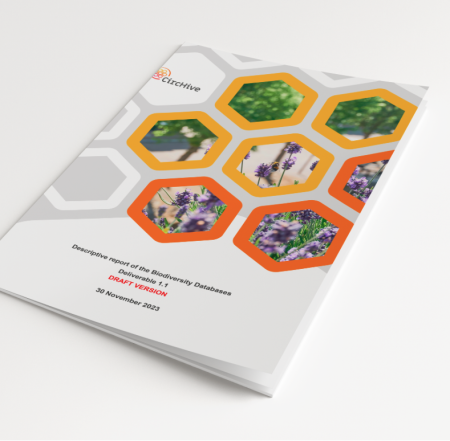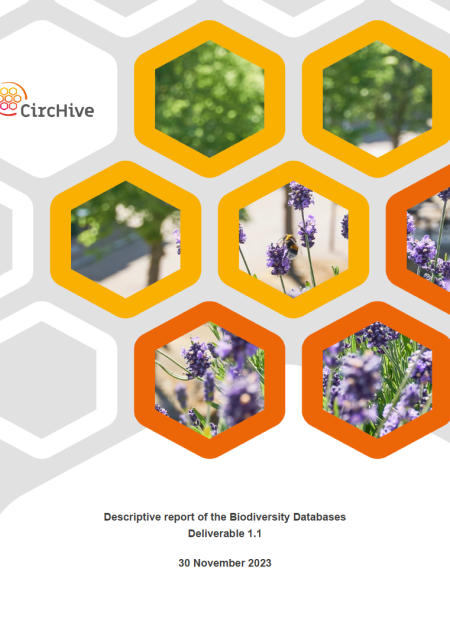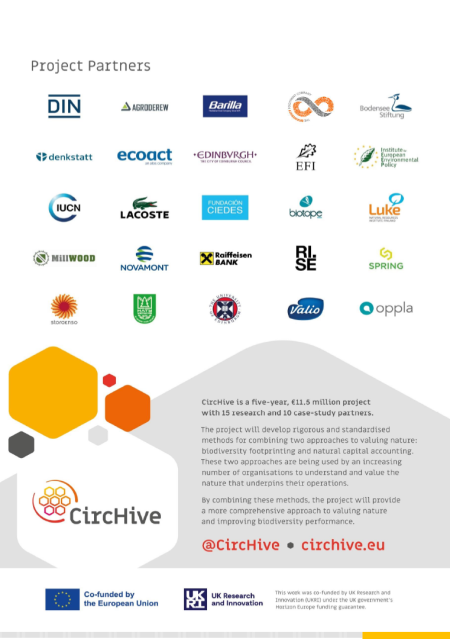
Resource description:
The goal of this report is to define key definitions and concepts around biodiversity, report on the existing data and databases of relevance for biodiversity and natural capital accounting, synthesise findings provide guidance for use of a spreadsheet containing databases and provide general guidance and recommendations.
Biodiversity (BD) and ecosystems (ES) are increasingly deteriorating across the world as there is an increasing demand for natural resources (IPBES 20191). Businesses rely highly on BD and ecosystem services and have the power to impact overall BD positively or negatively. Due to the business risks’ and opportunities' reliance on BD there is an increasing demand to measure and report the impact on BD, the negative as well as the positive. In addition, one of the objectives of the COP15 for 2030, that took place in Montréal in December 2022, requires transnational corporations and financial institutions to transparently monitor, assess and disclose the biodiversity risks and impacts of their operations, portfolios, supply, and value chains. At European level, the Corporate Sustainability Reporting Directive (CSRD), which will come into force on 1 January 2024, aims to harmonize and strengthen the non-financial reporting obligations of major European companies. These obligations will include precise reporting standards on BD and ES. As a result, many methods have been published to evaluate BD impacts, such as Global Biodiversity Score (GBS) or Exploring Natural Capital Opportunities, Risks and Exposure (ENCORE)2, but there are neither standards, nor common approaches yet in use in a globally level.
In the light of the ongoing biodiversity loss as well as standardized methods that could support businesses to safeguard nature, European Union funded a project, CircHive. The five-year project aims to mainstream the use of biodiversity footprinting (BF) and natural capital accounting (NCA) in an integrated approach through methods, models, and guidance developed, improved, and piloted on field with case study partners from various sectors.
One of the projects objectives is to improve data availability and accessibility for life-cycle assessment (LCA) and NCA. In fact, “data, inventories, and monitoring on nature” has been identified by the 2019 IPBES global assessment report on BD as one of the key information needs. Data on BD impacts, dependencies and risks are required along the entire value chain to enable calculations of LCA or NCA. However, data can be scattered, collected, and analyzed with different kinds of observation scales or methodologies that can alter their reliability and usefulness. We need harmonization and standardization of data as well as facilitated access to make it easier to search, evaluate and compare accounts and data. This would improve integrity, accuracy, and consistency across databases. To do so, CircHive’s first task (1.1) is to develop a screening process on available environmental data and database sources, availability, accessibility, quality, and needs, and further synthesize findings on regional and national level databases related to BD and natural capital (NC). The location and content of each data set, and the ability to update and export the data for external use will be specified, highlighting current gaps.
The report aims to:
- Define important definitions and concepts around biodiversity.
- Report on the existing data and databases of relevance for BD and NCA.
- Provide guidance for use of the spreadsheet listing databases.
- Synthesize findings on regional and national-level databases related to BD and NCA, specifying location, contents of datasets, etc. as well ability to export for external use, highlighting current gaps in data consistency and coverage, and describe successful and failed efforts to use and bring together data for corporate/private use.
- Provide general guidance and recommendations.
Author/Contact:
Authors:
- Biotope: Daniel Kieling, Noémie Cappelle, Tatiana Novoa, Karim Thibault, Cédric Elleboode
- Denkstatt: Denitza Pavlova, Martin Georgiev
- LUKE: Erika Winquist, Janne Artell, Teppo Jylänki, Laura Lahtinen, Ira Bhattarai;
- IUCN: Juha Siikamäki, Leander Raes, Matias Piaggio; EFI: Georgy Safonov, Michael den Herder, Janne Järvikylä, Simo Varis
- UNFU: Orest Kiyko, Ihor Soloviy, Oksana Pelyukh, Vasyl Lavny
- RISE: Björn Ringselle, Karin Morell, Ulf Jennehag; TBFC: Joel Houdet
- LCF: Marion Hammerl
Publisher:
Kieling, D., Cappelle, N., Novoa, T., Thibault, K., Elleboode, C., Pavlova, D., Georgiev, M., Winquist, E., Artell, J., Jylänki, T., Lahtinen, L., Bhattarai, I., Siikamäki, J., Raes, L., Piaggio, M., Safonov, G., den Herder, M., Järvikylä, J., Varis, S., Kiyko, O., Soloviy, I., Pelyukh, O., Lavny, V., Ringselle, B., Morell, K., Jennehag, U., Houdet, J., & Hammerl, M. (2023). Descriptive report of the Biodiversity Databases. CircHive Horizon Europe.
- CircHive Biodiversity Databases report (1.71 MB)

